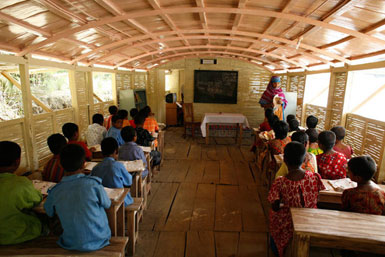When we wrote about the surge of small solar in Bangladesh last May, we were astounded that 2667 solar systems were being added every day.
Since then, the numbers have grown to 50,000-60,000 a day, bringing the government’s goal into reach – a solar nation by 2021, where every household has solar.
Solar has now reached 3.5 million homes – 10% of the population – up from 1 million in 2012, according to government’s Infrastructure Development Company, which runs the program with funding from the World Bank and other development partners.
In addition to low cost financing for small, home solar systems, the government has plans for 50 mini-solar grids across the country by 2017, part of its plan to replace all diesel-powered irrigation pumps with solar in five years. Five large solar farms are also in the works, adding 143 megawatts of capacity.
And that’s not the only way Bangladesh is stepping up to meet its challenges.
Floating Schools & Farms
Bangladesh – a country of waterways – is one of the most threatened by rising sea levels. About a third of the country is covered by water during monsoon time, but with climate change, water can soak two-thirds of the country.
An amazing nonprofit, Shidhulai Swanirvar Sangstha, has developed solutions that can be used in many parts of the world.
When there’s too much rain, students take classes aboard solar-powered boats, often for four months a year. There are now 22 floating schools, five floating health clinics and 10 libraries. A new two-tiered school has classrooms on the lower level and a playground on top.

And in the watery world that’s taking over, they are even helping people create floating farms. The nonprofit provides training, seeds, feed and the entire structure for farms that include ducks, fish and even a vegetable garden.
The structure, will is moored to shore, is large enough for 5-10 people who can earn about $1700 a year selling eggs, fish and vegetables. So far, there are 40 floating farms, with plans for 400 in the next few years.
Made from a simple bamboo platform, floating farms are 56 feet long and 16 feet wide, and float on empty oil drums or plastic containers, moored to the shore.
These adaptations are crucial, because the only alternative to flooded farms is for people to move into overcrowded cities. Bangladesh is one of the most densely populated countries with 156 million people living in an area the size of Iowa.
Learn more about Shidhulai Swanirvar Sangstha:
